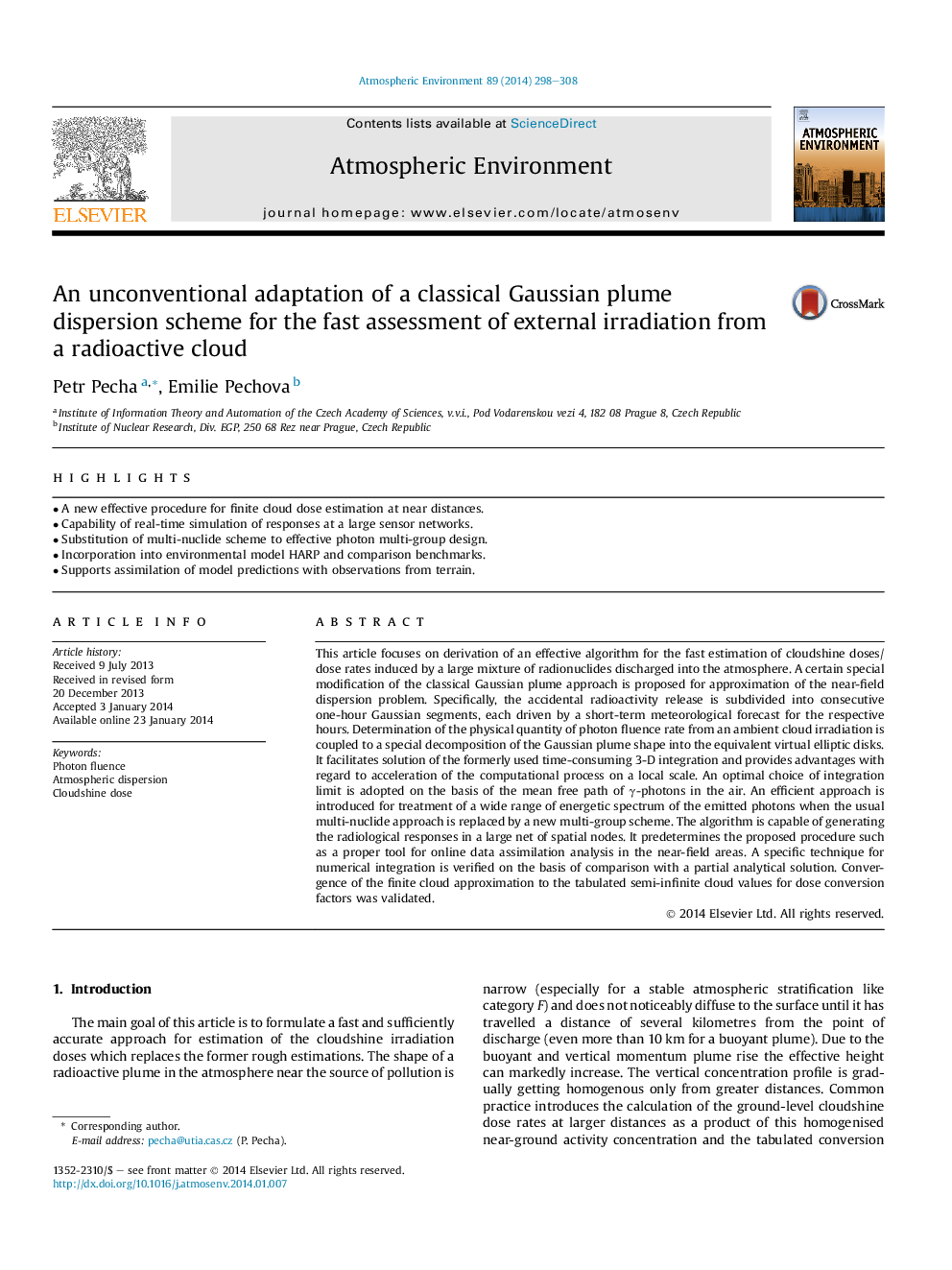| Article ID | Journal | Published Year | Pages | File Type |
|---|---|---|---|---|
| 6340201 | Atmospheric Environment | 2014 | 11 Pages |
Abstract
This article focuses on derivation of an effective algorithm for the fast estimation of cloudshine doses/dose rates induced by a large mixture of radionuclides discharged into the atmosphere. A certain special modification of the classical Gaussian plume approach is proposed for approximation of the near-field dispersion problem. Specifically, the accidental radioactivity release is subdivided into consecutive one-hour Gaussian segments, each driven by a short-term meteorological forecast for the respective hours. Determination of the physical quantity of photon fluence rate from an ambient cloud irradiation is coupled to a special decomposition of the Gaussian plume shape into the equivalent virtual elliptic disks. It facilitates solution of the formerly used time-consuming 3-D integration and provides advantages with regard to acceleration of the computational process on a local scale. An optimal choice of integration limit is adopted on the basis of the mean free path of γ-photons in the air. An efficient approach is introduced for treatment of a wide range of energetic spectrum of the emitted photons when the usual multi-nuclide approach is replaced by a new multi-group scheme. The algorithm is capable of generating the radiological responses in a large net of spatial nodes. It predetermines the proposed procedure such as a proper tool for online data assimilation analysis in the near-field areas. A specific technique for numerical integration is verified on the basis of comparison with a partial analytical solution. Convergence of the finite cloud approximation to the tabulated semi-infinite cloud values for dose conversion factors was validated.
Keywords
Related Topics
Physical Sciences and Engineering
Earth and Planetary Sciences
Atmospheric Science
Authors
Petr Pecha, Emilie Pechova,
